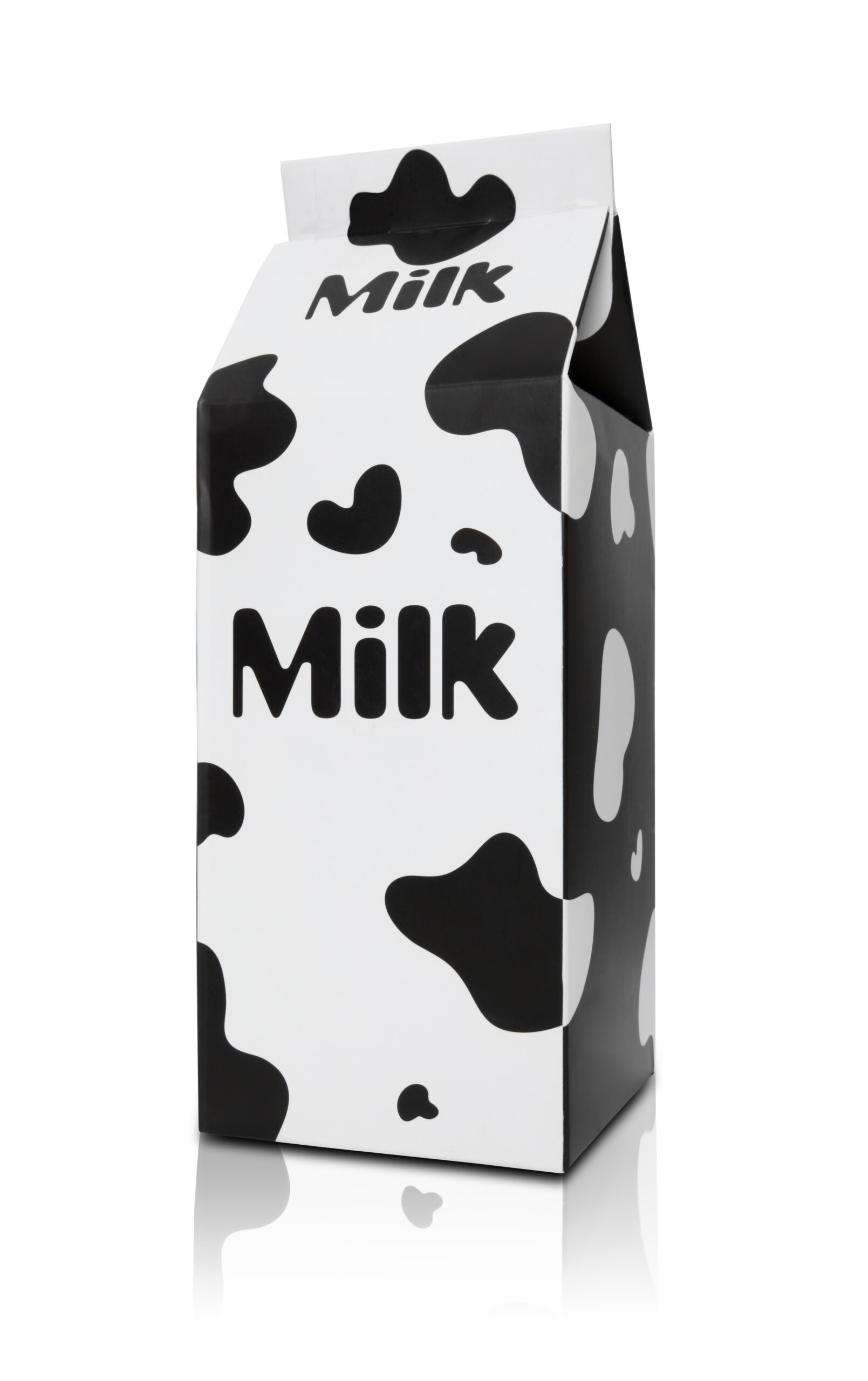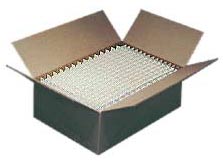Category Archive: Uncategorized
How to Package (and Divide) Automotive Components
This summer, the American automotive industry experienced one of the best sales periods in its entire history. As of August, 14.3 million American cars, light trucks, SUVs, jeeps, vans, and hummers have been sold right here in the continental United States. In a downbeat economy like ours is right now, news like that has got a lot of people hopeful about what’s coming round the bend in terms of national recovery. We here at M & M Box Partitions have definitely noticed an uptick in the number of automotive components we’ve been asked to provide partitioning for. So it seems like our personal experience bears out what’s been going on in terms of the bigger, nationwide picture.
While we’re proud of the fact that automotive plants are booming (at least in comparison with many other sectors of the American economy), we’re here today more to talk more about how best to ship the smaller car components we traditionally provide partitioning for here at M & M. First of all, while there are a number of different box materials you can use, we always recommend corrugated: it’s light, flexible, and sturdy – perfect for the job. Secondly, we recommend providing cushioning in between the partitions, since certain auto parts are fairly susceptible to damage or breakage while in transit. We’re aiming for a certain level of stretch and flexibility for the components (in other words nothing that will put too much pressure on the parts), but that being said, the main thing to insure is that there isn’t any wiggle room for car parts to “bang around” during shipping. Finally, be sure to pad any sharp edges on the components. The last thing you want is a car part in one partition cell breaking down the barrier and rolling into the next one. That can cause a chain effect, such that when you open your corrugated box, you discover all the various parts are scattered all around.
Just a bit of advice from the folks at M & M! If you’re looking to ship automotive components and you need the right kind of partitioning for them, we’re the experts you were looking for. Go ahead and call or email us today!
Share this:
Posted in: Uncategorized
How Best to Deal with Shipping Broken Ceramics
Ceramics and pottery are fragile materials to begin with. How many times has your business ordered a bulk-order shipment of ceramics that – despite all the best packaging efforts and intentions – still contained a few cases of “broken crockery?” While a few bad apples in one shipment don’t mean especially much (at least usually), the costs mount up if you’re running a long-term ceramics shipment program. There may even be the necessity of sending away of these ceramics for repairs and refurbishment… this usually calls for even more precautionary packaging and box partitioning to ensure that the already broken pieces don’t arrive even more “defected”.
Of course, one can go the low-budget route of simply adding bits and pieces of newspaper and discarded bubble-wrap to help protect one’s items, but this is hardly feasible when it comes to more high-end ceramics. One of the best solutions for shipping broken high-end ceramics is by using specially customized partitioning inside your delivery boxes. Not only does the highly precise nature of each individual partitioning square allow for very little “wiggle room” for ceramics to break, but the material with which the partitioning gets made can be engineered to be especially accommodating and impact-resistant. M & M provides just these kinds of materials and packaging services. With the right customized level of quality at your beck and call, you’ll soon see that – just like spilled milk – there’s little use fretting over broken ceramics. Sit back for once and let the partitioning experts help on the job!
Share this:
Posted in: Uncategorized
We Want to Know from Our Readers – What Kinds of Projects Are You Making These Days?
Let’s be clear and forthright that much of the goal of writing a social media blog is to convey one’s own, clear message to the waiting ears of Joe Q. Public, and – hopefully – sell some products and/or make some business friends along the way. But there’s really more to it than that, isn’t there? A lot more. Social media isn’t just about talking about one brand till one’s face turns blue – though that’s a great and useful part of it. No… another, equally valid part of social media is getting customer/blog reader feedback about their own experiences. Since we’re a box partitioning company, we want to ask you a simple question: what are you working on these days?
In the packaging, partitioning, warehousing, or transporting of various consumer goods – everything from consumer electronics to packaged food – we can only imagine how many different kinds of applications you might be developing at your business right now. Not only do we want to know what kinds of assignments you’re working on these days, but if they require a certain level of quality delivery shipping and handling to ensure they make it to the customer on time and in one piece? Are you an electronics company who ships its components from China and Taiwan to the States and Canada? Are you an automotive parts manufacturer or supplier who does a steady living at building new product, but wonders if there might be a way to match product quality with packaging quality?
We’d love to hear from you, both and now and over the ongoing months. Whether or not we end up doing business together is pretty much irrelevant – most likely we aren’t, nor have we ever. But it would give our company a better sense of where it’s headed, and possibly help your own business articulate a better, clearer vision of the “Next Big Thing” you’re seeking to develop and package.
Let us know when you can. You can call us at 800-992-3557, or email us at jrm@mmboxpartitions.com. Good packaging is a nice and easy convenience to you. To us, it’s a way of life.
Share this:
Posted in: Uncategorized
Globalization, a Two-Way Street: the “Re-Shoring” of American Manufacturing
The vicissitudes of today’s global economy seem to be drawing American businesses back home. As the markets teeter this way and that in alternating states of optimism and despair, US business-owners are seeking to reduce the length of their supply chains with the expectation that a reduced supply chain will allow them more direct control of the products and services they provide for their customers. Apple, Inc., for instance, is now showing signs of removing some of its hardware and software engineering officers in China and relocating them close by its headquarters in Cupertino, CA. Everything from steel milling, to automotive part fabrication, to printed circuit boards, and to common household items such as glassware and ceramics have been trickling back to these shores. While the past month has seen a slight decline – the first of its kind in over three years – in American manufacturing capacity, the overall trend continues to spike upwards.
The packaging industry – including our own partitioning industry – has a prime opportunity of seizing upon this trend of shorter supply chains. With quicker delivery times, no overseas shipping costs, and – pound for a pound – a superior overall product quality, American packaging and materials handling companies are standing by to help jump start the new resurgence in domestic manufacturing and delivery services. Being that we are one of the long-standing, stalwart companies in box partitions, egg crating, and being that our location in Chicago puts us at the hub of all North American commerce, the time seems ripe for M&M Box Partitions to make its services felt that much more to its clientele, as well as help America continue its slow, painful climb up and away from the “Great Recession”.
Share this:
Posted in: Uncategorized
The Electronics Supply Chain: a Macro-Level View
Since we’re a company deeply involved in the packaging of electronics goods, we thought we’d share this story: as of this year, large companies like Apple and Samsung have grown increasingly dominant in setting the agenda for the international electronics supply chain. In other words, companies like Apple (or Samsung, or Hewlett-Packard, or Dell) have increased their total spending on semiconductors manufactured from overseas. By doing so, they put themselves in a better position at determining what prices semiconductor and printed circuit board manufacturers should set their products at. The name-brand competition is fierce, with Apple spending $29B alone on OEM semiconductor products. Samsung comes in second at $14.9B, Hewlett-Packard comes in third at $13.7Bm and Dell comes next at $10.2B.
Other top-of-the-game players include such household brand-names as Sony, Panasonic, Cisco Systems, Canon, Toshiba, and Fujitsu. All of this fierce but friendly competition in semiconductor spending can only mean great things not only for OEM circuit and electronics manufacturers, but those in the electronics packaging industry as well. With such a huge number of OEMs getting in on the act of supplying the mega-companies with quality product, it’s a vast opportunity that few packaging companies would care to miss out on. With our own extensive history of providing box partitioning for electronic components, we at M&M feel as though we are in the right space at the right time. Let the packaging – and partitioning – begin!
Share this:
Posted in: Uncategorized
European Glass Packaging Industry Is Back on Its Feet
Many of us look at Europe right now and see a continent on the verge of an economic mudslide. But good news is always welcome news: recently, the European Container Glass Federation, or FEVE, heralded the official resurgence of the EU’s glass packaging industry. The report from early July showed that – despite the tough times – overall production was on the upswing for glass packaging’s largest producers.
While Italy’s glass packaging manufacturing sector only increased a modest 1.8%, France’s total output for 2011 rose by a full 5%. Turkey’s also increased an equivalent 5%. As for Germany, the economic powerhouse of the European Union, total glass packaging production skyrocketed by a full 7% from the previous year. All in all, the making of glass packaging increased by 4% across the continent. Not only do the French, Turkish, and German figures suggest that the packaging industry in these countries has risen back to pre-recession levels, but they suggest that a lot of European export industries, specifically those depending on glass packaging for their products – perfumery, cosmetics, and pharmaceuticals – are back on the up and up.
While certain sectors in the EU economy are still very much a mess – real estate and financial sectors in particular – it goes to show that the picture is much more complicated than many would give it credit.
Share this:
Posted in: Uncategorized
The Need for Proper Insulation in Pharmaceutical Packaging
When it comes to pharmaceuticals, you can never be too careful in terms of shipping, especially when it comes to transporting medicine over long Interstate distances. That’s the premise that a whole specialized transportation industry has been developed around. At any moment of the day in North America, cargo trucks with specific, temperature-controlled semi-trailers are hauling several metric tons of pharmaceuticals from factory-floor to drugstore counter. The reason for these trucks being meticulously temperature-controlled is on account of the medicine they carry. Even the most innocuous, over-the-counter drugs can be rendered ineffective (or worse)
if they are exposed to too much heat during the course of shipment.
Pharmaceutical packaging and partitioning are themselves essential parts of ensuring product quality. The key to designing packaging and partitioning for pharmaceuticals is making sure they are insulated properly. Without the right level of insulation – especially when it comes to interior partitioning and layer padding – the corrugated containers being transported can soak up an excess amount of heat. If that happens, then the drugs are most often rendered forfeit, and both drugstore and drug manufacturer lose a huge amount of profit.
At M&M Box Partitions, we provide customized die-cut insert and layer padding for the pharmaceutical industry. With a host of different types of paper for inserts and layering, we guarantee that our products will protect yours with the utmost care and deliberation.
Share this:
Posted in: Uncategorized
Chipboard Stages a Retro-Revival for Itself
The humble and omnipresent material known as “chipboard,” or “particle board,” is making a comeback for itself in some unlikely, even fashionable, venues. Used in packaging and package partitioning since its inception (chipboard is one of the primary materials we use in our box partitioning here at M & M), as well as in scrapbooking and frame-building, chipboard is “making a comeback” as a vintage means of decorating everything from corporate office spaces to Brooklyn, Chicago, and East End London dive barsGoogle’s new research campus in London, for instance, relies heavily on chipboard for its new wall design. The chipboard is supposed to project a raw, urban, and grittily trend-setting image for the giant computer company. Since a vast number of Google’s employees are in their 20s and 30s, this atmosphere has been built in hopes of being “inspirational” to those who work there.
Additionally, chipboard is staging a retro-revival for itself in other urban settings, such as in trendy restaurants and bars. The Alibi, one of East London’s current hottest dance venues, is essentially a dive bar with walls entirely made of chipboard. In America, it’s catching on as well. Within our own Chicago city limits, one can see “chipboard chic” alive and well at new restaurants and pubs in Bucktown, Ukrainian Village, and Wicker Park. In Brooklyn, as well, the Williamsburg, East Williamsburg, and Bushwick neighborhoods have all developed a love for party-friendly particle board.
All of this is, of course, a passing phenomenon. Chipboard will continue to drive the packaging and partitioning industries in America and throughout the world. But as a reflection of the still considerable might (and storied history) of concentrated industry in cities, the grit and urban associative-ness of chipboard will continue to thrive, regardless of how it’s packaged.
Share this:
Posted in: Uncategorized
Milk Carton Stock: Ideal for Food Package Partitioning
It wasn’t too long ago – certainly within the scope of many of our lifetimes – when milk was delivered each morning at your doorstep by means of a glass or a metal bottle. There was no better solution or more convenient way of storage. Milk had to be delivered daily; otherwise the milk would spoil overnight. It was just an accepted fact of daily city and suburban life. The milkman on his morning rounds about the neighborhood was as stereotypical a fixture of American life as was, say, the paperboy on his morning paper-route (that is, until the mid-2000s when digital newspapers caught on).
But all of a sudden, almost as if overnight, something changed. What technological development happened that sent the milkman the way of the dinosaur? It all can be traced back to 1933,

What led to its popularization was when American diary packagers introduced polyethylene into the paperboard for added strength and waterproofing. While this happened in the 1940s, it took many years for the country to come to its good senses and adopt a technology that was better for carrying milk, and that could, with the help of effective refrigeration, keep milk from spoilage for days on end.
Today milk carton board is used for many other things beyond milk cartons. M&M Partitions uses milk carton paperboard for portioning food and beverage products that are prone to leakage or spillage. That way, if a package gets accidentally overturned or mishandled, the damage to its contents are relegated to a few sections of the box, and won’t tend to flood the whole container.
Share this:
Posted in: Uncategorized
SBS Partitioning and its Use for Pharmaceutical Packaging
One of the steady workhorses for our company in recent years is our partition work on behalf of the pharmaceutical industry. With the minute number of bottles, boxes, pillboxes, and various containers that pharmaceuticals require when being shipped, and given the fact that profit margins from major US and European drug companies continues to soar, it’s small wonder that so much of our business comes from medicine and OEM medical device packaging.

SBS, otherwise known as solid bleached sulfate, is the ideal partition material for pharmaceutical shipping. Comprised of premium paperboard, coated with a thin layer of kaolin clay to better its printing surface legibility, and oftentimes additionally coated with polyethylene resin in order to protect against costly spillage and product spoilage damages; SBS partitioning keeps medical bottles and containers protected, neatly organized, and well-labeled throughout the rigors of transport and handling.
Share this:
Posted in: Uncategorized






